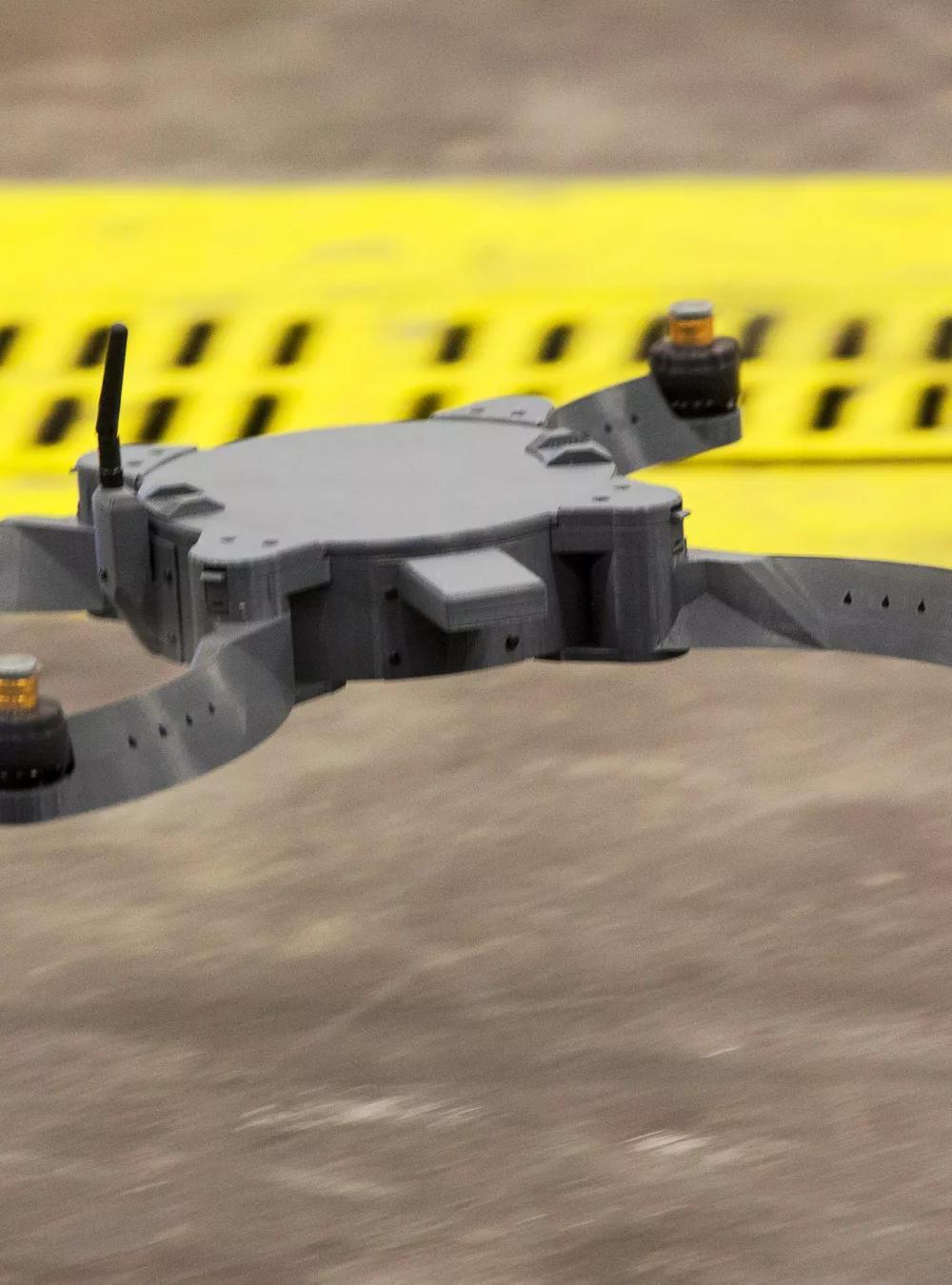After 10 years of success, MITRE's Nibbler drone program continues to enable the Department of Defense and other government agencies to evolve aerial systems and technology. And it’s helping shape our nation’s view into the future of autonomous vehicles.

From Playgrounds to Battlefields, MITRE Helps Sponsors Shape Our Uncrewed Flying Future
Drones offer amazing promise and peril to governments and citizens. A decade ago, MITRE researchers realized if we were going to help government agencies understand either, we needed aerial platforms that enable rapid prototyping, testing, and experimentation.
Enter Nibbler: MITRE's low-cost, 3-D-printed prototype drone for UAV (uncrewed aerial vehicle systems) research.
Early drone systems could cost upwards of $40,000 each, making research a pricy proposition. With Nibbler, it’s possible to test ideas like swarming and autonomous anti-collision protocols in the real world, without worrying about an expensive aircraft. It’s become a vital tool for understanding the technology.
“At other organizations, we didn’t have the budget to replace UAVs when things break,” says Brian Matejevich, a MITRE autonomous systems engineer. “Because the price tag here is more palatable, we can try things we would never have tried before.”
Nibbler’s other advantage: an incredibly simple design. While it may lack a clean finished exterior, that ready access to the internal workings is exceedingly practical.
Over the last decade this has turned into a way to rapidly prototype and explore ideas around the practical use of autonomy.
“Commercial drones are locked in a sleek aerodynamic case,” says, Alex Maxseiner, another MITRE autonomous systems engineer on the project. “With Nibbler, we can integrate new sensors with just a little hot glue. It offers a level of flexibility that’s really unmatched.”
Low-cost, repairable, and adaptable, the Nibbler allows MITRE researchers to create rapid iterations, adaptations, and improvements to drones and sensors, with replacement parts printed on the fly. This flexibility has allowed the program to respond to sponsor needs in ways most organizations can’t.
A Drone Custom-Made for the Intelligence Community
Nibbler began life not as a testbed but as a puzzle. In 2012, the intelligence community challenged MITRE to create a cheap, easily repaired, uniquely capable, 3-D printable drone. MITRE's answer was Nibbler. The drone was so successful that an early version was displayed in the Defense Intelligence Agency’s Museum.
In 2016, the program expanded when a group of U.S. Marines wanted to test integrating Nibbler UAVs into their operations. Since MITRE can’t manufacture products for profit, we taught the Marines how to build, design, and test their own Nibbler systems.
The program took off as the Marines and other government sponsors adapted the drone for their use.
“When we started, we were trying to solve a very specific mission problem,” says Michael Balazs, Ph.D., Nibbler program lead, “But over the last decade this has turned into a way to rapidly prototype and explore ideas around the practical use of autonomy.”
At MITRE, that means not just imagining or simulating these ideas, but designing, constructing, and testing future concepts in the real world. Even if that means dozens of drones operating at once.
Analyzing the Perils and Possibilities of Drones
As a not-for-profit company that operates R&D centers for the federal government, one of MITRE's strategic advantages is that our programs don’t end with a simple product. We help provide sponsors with awareness of the implications and complications of technology as well. Nibbler unlocked a vital new avenue for MITRE researchers and our sponsors to explore.
Among those questions: What capabilities could drones provide our sponsors? What capabilities could they provide our adversaries? What would it mean for an autonomous system to enter a combat zone? And what does the growing normalization of drones in our skies, mean for military, domestic law enforcement, and commercial operators?
“Since the time Nibbler began, we’ve moved from drone warfare being theoretical to actual,” Andy Chapman, autonomous systems engineer, says. “So, MITRE is always thinking of what comes next.”
And as drones appear above locations from film sets to playgrounds to battlefields, the importance of these questions can’t be understated.
Today, the Nibbler team continues to search for answers. Our researchers are experimenting with fixed wing drones to test sensor packages and bespoke payloads. They’re writing and adapting software for 3-D mapping; testing automation in the field; and trying to tackle coordination between drones.
As it enters a second decade of success, the Nibbler program is continuing to innovate—and still flying high.
Join our community of innovators, learners, knowledge-sharers, and risk takers. View our Job Openings